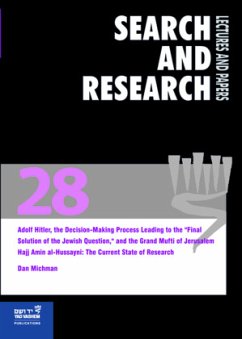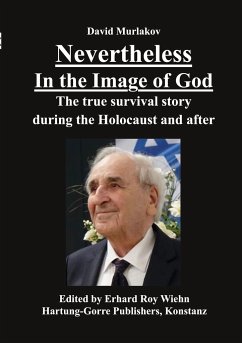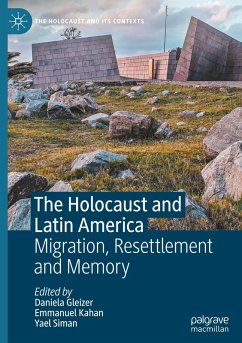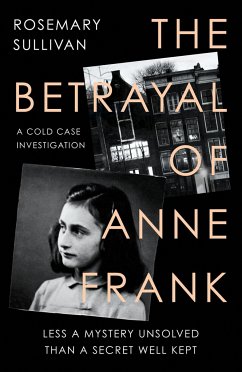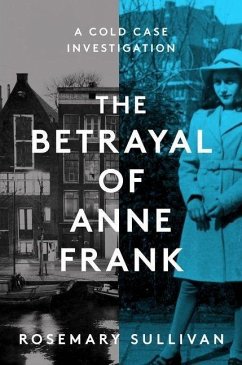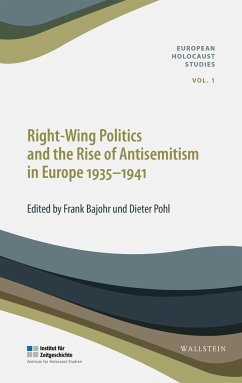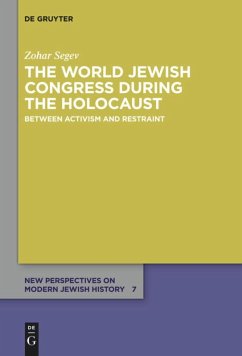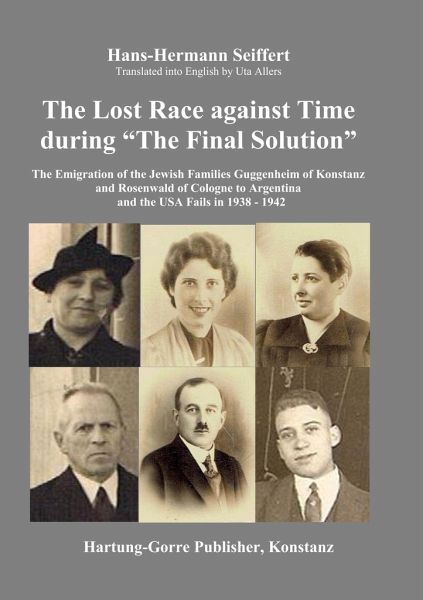
The Lost Race against Time during "The Final Solution"
The Emigration of the Jewish Families Guggenheim of Konstanz and Rosenwald of Cologne to Argentina and the USA Fails in 1938 - 1942
Versandkostenfrei!
Versandfertig in 1-2 Wochen
19,80 €
inkl. MwSt.

PAYBACK Punkte
0 °P sammeln!
The book about the fate of the Guggenheim family of Konstanz, launched in the spring of 2010 with the title "In Argentinien gerettet - in Auschwitz ermordet" ("Saved in Argentina - Murdered in Auschwitz"), seemed to have been completed. All the documents, which had been found during a two-year intensive search of various archives and memorial sites, had been checked and the results shared in interviews with the descendendants in Argentina. Admittedly, there were scant document to be had, since the letters between the interned Guggenheim family members and their relatives - now safe in Argentin...
The book about the fate of the Guggenheim family of Konstanz, launched in the spring of 2010 with the title "In Argentinien gerettet - in Auschwitz ermordet" ("Saved in Argentina - Murdered in Auschwitz"), seemed to have been completed. All the documents, which had been found during a two-year intensive search of various archives and memorial sites, had been checked and the results shared in interviews with the descendendants in Argentina. Admittedly, there were scant document to be had, since the letters between the interned Guggenheim family members and their relatives - now safe in Argentina - were no longer available; they had simply been lost. The lack of any correspondence from Camp Gurs, Camp Les Milles and Marseille to Buenos Aires is particularly unfortunate. Of course, the letters going the other way disappeared with the murder of Salomon, Toni and Dagobert Guggenheim in Auschwitz. The life of the three Guggenheims and the way to their destruction could be considered fully researched, given the lack of further evidence at the time. So it was a big surprise when, in June 2017, more than seven years after the publication of the book, a Jewish woman with German ancestors contacted the author from abroad; she expressed a keen interest in the documentation of the fate of the Guggenheim families of Konstanz and Donaueschingen. This contact was doubly surprising: for one thing, this person - Joan Rosenwald-Fradkin - got in touch not from Argentina, but from the USA, and her ancestors came not from Konstanz or Donaueschingen, but from Cologne. The other astonishing fact was that Joan¿s father and aunt, the siblings Fritz and Lisel Rosenwald, had a close relationship with both Guggenheim families. Fritz Rosenwald had become friends with Isi Guggenheim during his three-year position with a Konstanz company, while his sister Lisel had a romantic relationship with Dagobert Guggenheim. These connections were neither documented in the available papers, nor did the descendants in Buenos Aires know about them. It turned out to be a special stroke of luck that the abundance of letters - a total of over 300 - written by Lisel and her parents in Cologne to their brother and son Fritz, who emigrated to New York City in 1938, had been preserved. It is especially the letters of Lisel, written to her brother every week from 1938 until her deportation at the end of 1941, that provide previously unknown details.



